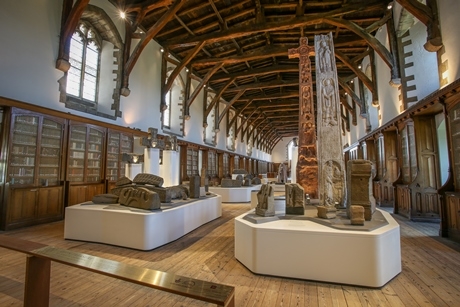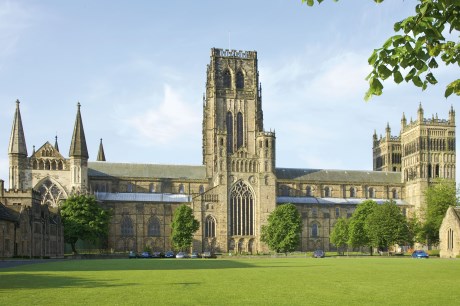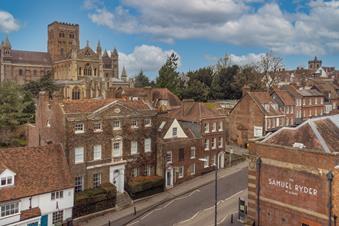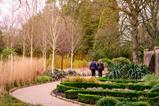
Sarah Holt spent a morning exploring Durham Cathedral’s new £10 million Open Treasure exhibition to size it up for groups.
Durham Cathedral’s reputation precedes it. Over the years it’s been variously described as the finest Romanesque church in Europe, and part of the ‘greatest architectural experience in Europe’.
Writer Bill Bryson even went so far as to describe the building as ‘the best on earth’, concluding “I don’t know of any place that is more glorious to be in.”
Even so, in 2015, the cathedral announced that it intended to build on its already cut-above quality by spending more than £10 million on a brand new exhibition called Open Treasure.
That exhibition finally opened to the public at the end of July this year, giving visitors access to previously hidden spaces within the cathedral.
The journey through the new exhibition begins in the newly restored Monks Dormitory. In the 14th century, this space was partitioned into narrow cubicles in which the cathedral’s resident Benedictine monks would study and sleep.
The room itself has the jaw-to-floor effect. It’s roofed by a giant rib cage-like structure made from battering ram-sized tree trunks.
Beneath the beams there’s an interactive exhibition that details the history of the monastic community at the cathedral including the dissolution of the monasteries in 1539 and ensuing formation of the Church of England.

Pictured: Durham Cathedral
The cathedral has gone to great effort to eliminate the red rope effect from this exhibition. There’s a hands-on element to most of the displays.
In one section you can even press buttons to spritz the air with smells associated with the piece of history you’re reading about or seeing. For example, you can read about the way the monks lit the dormitory while taking in a breath of beeswax.
From the dormitory you move into the Collections Gallery. This part of the attraction scrambles past and present. You enter certain sections through airlock doors, which have been set up so that the environment inside can be closely controlled to protect the precious exhibits.
On display at the moment are delicate textiles and clothing from Medieval times. In 2017, this gallery will become home to copies of the Magna Carta and other irreplaceable documents.
Beyond the Collections Gallery is The Great Kitchen. This beehive-like space is one of only two intact surviving monastic kitchens in England.
This area offers fly on the wall style insight into the day to day lives of the cathedral’s monks. You can see, for example, the spit on which they roasted contraband meat.
In 2017, the Treasures of St Cuthbert will take up residence in this space. Visitors will be able to see objects taken from the saint’s tomb including embroidered vestments and a pectoral cross. I’ve got a suspicion that seeing these ancient treasures will allow visitors to tap into their inner Indiana Jones (of The Last Crusade era).
Beyond the Great Kitchen there’s the Pilgrimage Gallery, in which you can explore the concept of pilgrimage and the stories of the pilgrims old and new that have visited the cathedral.
It’s a story of the tens of thousands of enquiring minds who have stepped foot in the cathedral since building began.
Going forward, thanks to the new Open Treasure offering, I can see it detailing the stories of many thousands more.
For groups Durham Cathedral offers packages for either free-flow visits with self-guide leaflets, or guided tours, which last approximately 75 minutes.
Further themed tours and talks are available on a variety of specialist interests, including selected behind the scenes tours.
To find out more about group visits to Durham Cathedral e-mail visits@durhamcathedral.co.uk.














